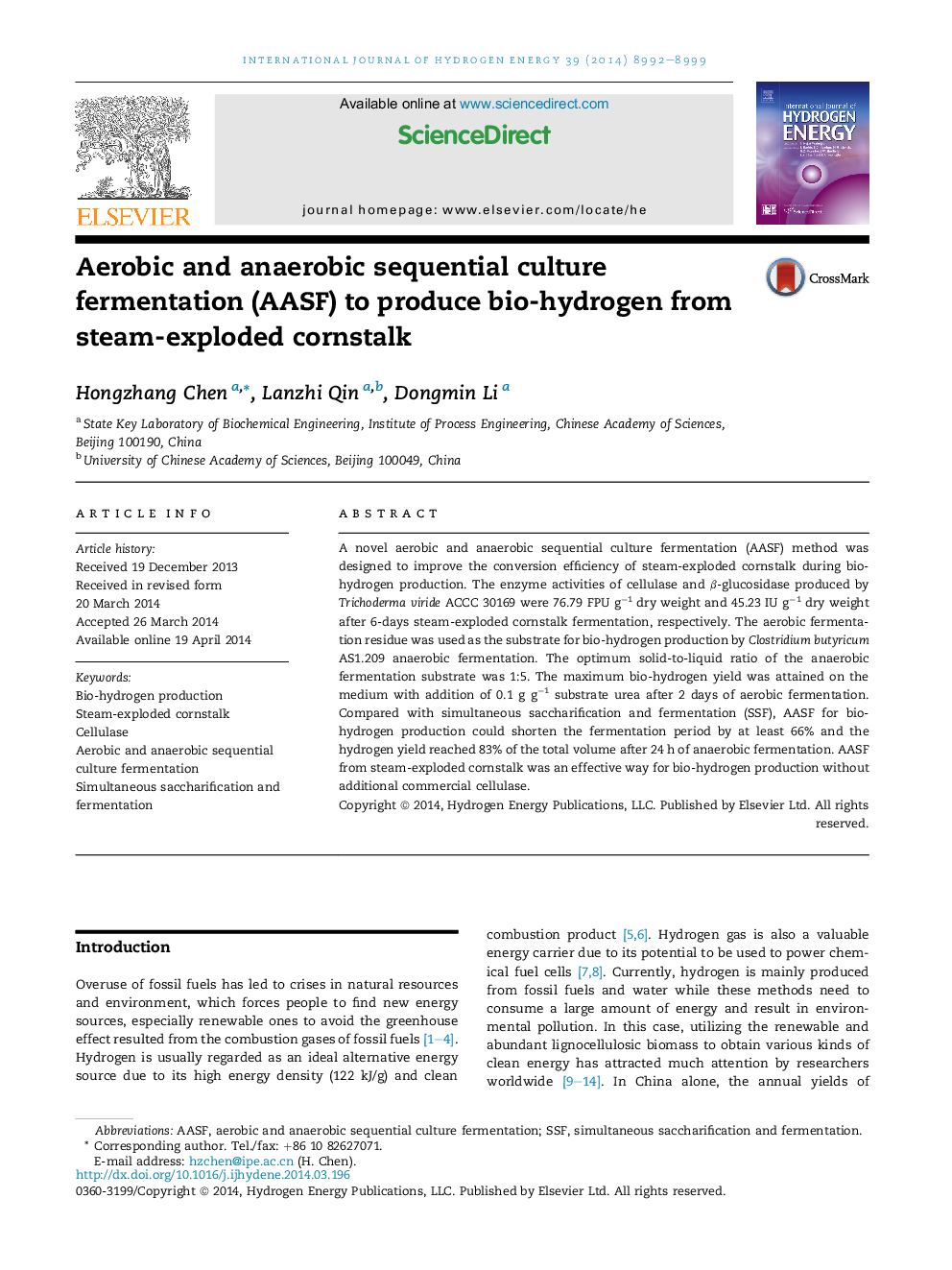| Article ID | Journal | Published Year | Pages | File Type |
|---|---|---|---|---|
| 7718972 | International Journal of Hydrogen Energy | 2014 | 8 Pages |
Abstract
A novel aerobic and anaerobic sequential culture fermentation (AASF) method was designed to improve the conversion efficiency of steam-exploded cornstalk during bio-hydrogen production. The enzyme activities of cellulase and β-glucosidase produced by Trichoderma viride ACCC 30169 were 76.79 FPU gâ1 dry weight and 45.23 IU gâ1 dry weight after 6-days steam-exploded cornstalk fermentation, respectively. The aerobic fermentation residue was used as the substrate for bio-hydrogen production by Clostridium butyricum AS1.209 anaerobic fermentation. The optimum solid-to-liquid ratio of the anaerobic fermentation substrate was 1:5. The maximum bio-hydrogen yield was attained on the medium with addition of 0.1 g gâ1 substrate urea after 2 days of aerobic fermentation. Compared with simultaneous saccharification and fermentation (SSF), AASF for bio-hydrogen production could shorten the fermentation period by at least 66% and the hydrogen yield reached 83% of the total volume after 24 h of anaerobic fermentation. AASF from steam-exploded cornstalk was an effective way for bio-hydrogen production without additional commercial cellulase.
Keywords
Related Topics
Physical Sciences and Engineering
Chemistry
Electrochemistry
Authors
Hongzhang Chen, Lanzhi Qin, Dongmin Li,
